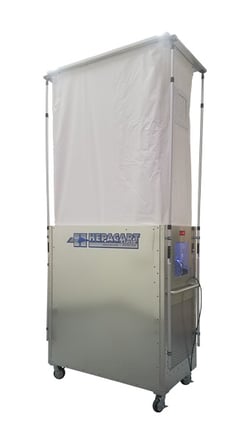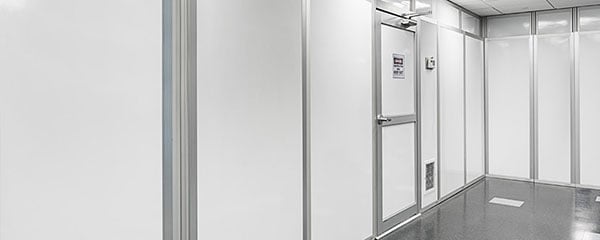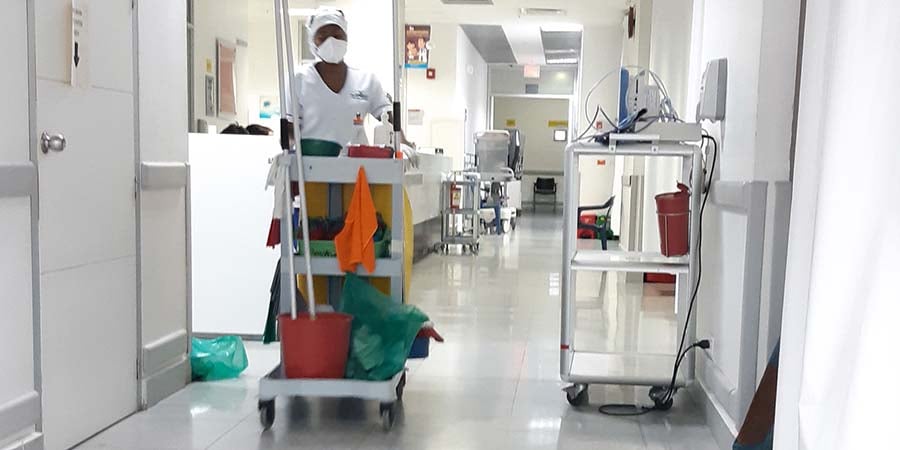Share this
3 Ways To Tackle Facilities Management Challenges
by HEPACART on Oct 28, 2021
Software, systems, and productivity tools can help eliminate common facility manager challenges.
Every FM struggles with a myriad of facilities management challenges, including tight budgets, undependable resources, unreliable vendors, and a never-shrinking list of maintenance tasks.
To help you do a better job as a facilities manager, we'll look at three things that can help you reduce chaos and set the stage for faster and more efficient maintenance work for years to come.

1. Implement Facilities Management Software
From our years spent working with facility managers in hospitals, long-term care facilities, schools, and office buildings, we know how vital a good facility management system is for managing your overstuffed and constantly morphing task list.
You may already depend heavily on computer-aided facilities management software (CAFM) for planning every aspect of managing your facility, from long-term planning down to day-to-day work. It helps with coordinating the physical workspace, people, and operations, including things like:
- Space and workplace management
- Asset management
- Room reservations
- Customer service requests
To address the maintenance management function, facilities management software often includes a maintenance module. When something more comprehensive is needed, the maintenance function can be handled by stand-alone software commonly referred to as a computerized maintenance management system (CMMS). But whether your CMMS comes as part of your CAFM or not, it's going to be at the core of supporting all of your building and equipment-related maintenance tasks.
2. Use Computerized Maintenance Management Systems
Let's take a closer look at maintenance. Computerized maintenance management systems exist in all industries, from trucking to manufacturing to aviation to education to healthcare. In hospitals specifically, their maintenance systems facilitate the management of building-related assets and critical medical equipment such as MRI machines, CT scanners, monitors, pumps, autoclaves, etc., all of which require calibration, maintenance, repair, and in some cases, decommissioning.
Since regular maintenance is key to avoiding unscheduled repairs and emergency replacements, it's wise to depend on a CMMS that can steer you clear of budget busters and keep things on an even keel.
An even more compelling reason for using a CMMS is safety. Poorly maintained equipment can become hazardous to patients and staff. A CMMS assists you in keeping maintenance schedules on track, resulting in a safe work environment. And a CMMS makes it easier to manage maintenance personnel, vendors, maintenance contracts, and parts inventories without slipping up.
3. Handle Simpler Maintenance Tasks In-house
Our third tip for increasing efficiency and maintaining order is to control maintenance scheduling and budgeting by depending less on outside vendors.
You can reduce your exposure to variability caused by undependable resources, unreliable contractors, and time-consuming to-do lists by investing in long-lasting, high-ROI equipment and tackling simpler projects yourself.
For example, dust containment can make in-house maintenance easier. Building maintenance often requires ceiling access, so employing a tool like dust containment carts would give you safe and quick access to the plenum above drop ceilings. If you purchase one or two of these units, you'll pay for them in time saved by eliminating the time-consuming task of erecting hand-built containment tents every time a ceiling tile is disturbed.
And if it seems like hospital expansion is pretty much a constant for you (as it is for healthcare facilities managers across the country), you should invest in portable, reusable barrier walls. The best of them have the stability of permanent walls, provide sound attenuation, are easily cleaned, and provide a solid return on investment in just a few years.

Dust Containment Carts
To avoid the laborious half-hour job of setting up zip poles and sheet plastic, hand-carrying a ladder inside the makeshift tent, and setting up a blower to create negative pressure, we recommend the one-time purchase of our HEPACART® Dust Containment Cart.
Born of necessity during a project to test hundreds of fire alarms at a children's hospital, those early HEPACART prototypes did their job and rescued workers from a seeming near-eternity of busywork. Even though early mobile dust containment units were basic, worker efficiency skyrocketed. What formerly took 30 minutes or more now took about two. One person rolled the cart into position, raised the telescoping enclosure until it contacted the ceiling with its foam gasket, plugged it into the wall, opened the door, and stepped inside. Ladder, tools, negative machine with HEPA filter, and lighting were instantly in position.
Given HEPACART's durability, it has proven to be an investment that lasts far beyond the point where it has paid for itself. The original design has stood the test of time, and field upgrades and retrofit options are available to keep every unit up to date, no matter when manufactured.
In addition to its contribution to efficiency, the HEPACART dust containment cart increases safety for workers and patients, and reduces construction waste.

Barrier Walls
Since it seems construction and expansion projects will ever be with us, let's apply the same logic to them as we did to ceiling tile maintenance — only this time, we need walls. That's where STARC® Systems RealWall™ and LiteBarrier™ come in. They're portable, reusable temporary barrier systems with the major advantages over conventional temporary walls — whether plastic sheeting over wood, reusable fabric, or ordinary drywall — namely, speed, efficiency, safety, and reduced waste.
What kind of speed? Two workers can put up 97 feet of RealWall in one hour! That kind.
Easily stored on carts and rolled out when needed, STARC RealWall and LiteBarrier panels can be ordered with doors, windows, and ports for attaching negative air machines.
Conclusion
There are two more productivity-enhancing tools you should consider, covered in the article, 4 Dust Containment Tools that Every Healthcare Facility Manager Needs. Check it out. It's a quick read.
For comprehensive information on all of our dust containment equipment, browse productivity tools on our website.
More reading:



